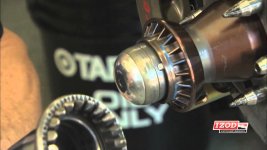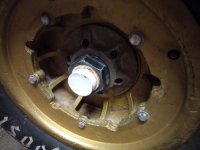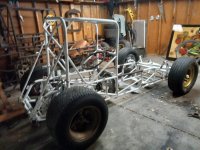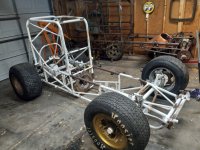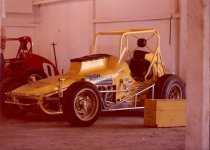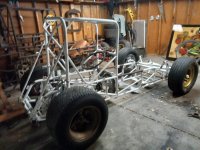rrrr
Well-Known Member
- Joined
- Dec 19, 2007
- Messages
- 16,778
- Reaction score
- 38,451
While watching the Daytona 500 on Sunday, I paid particular attention to the new wheels and any difficulties encountered by tire changers during pit stops. There were a bunch of them. I'm going to sort out the issues and comment on what was done wrong.
But first I'll discuss the new wheels and how they will affect braking.
As everyone knows, NASCAR made a significant change to tire and wheel combinations for 2022. The wheel size has been enlarged, from 15" to 18" bead diameter, and the five lug nuts on last year's wheels are being replaced by a single center lock attachment.
The wheels are forged aluminum, replacing heavy steel units. The tires now being provided by Goodyear will generally be made with a softer rubber compound with more grip, and because of the reduced sidewall dimension, inner liners will no longer be used.
The larger brake rotors, made possible by the 18" wheels, increase the rear brake rotor friction surface area from 53 square inches to 105 square inches. The front rotor friction surface area increases from 41 square inches to 78 square inches. While this appears to mean a much more aggressive brake package, the advantages are not as large as one might think.
The limiting factor in stopping power is tire adhesion, so now it's much easier to lock up the tire under heavy braking. Where the advantage really lies is the brake rotor's ultimate temperature gain under racing conditions. The larger rotor surface area means that peak rotor and pad temperatures on short tracks will be much less than before, which will greatly reduce rear wheel hop during heavy braking, and brake fade attributable to rotor heat will decrease. Rotor explosions are likely a thing of the past.
Next: The center lock single lug wheel and pit stops
But first I'll discuss the new wheels and how they will affect braking.
As everyone knows, NASCAR made a significant change to tire and wheel combinations for 2022. The wheel size has been enlarged, from 15" to 18" bead diameter, and the five lug nuts on last year's wheels are being replaced by a single center lock attachment.
The wheels are forged aluminum, replacing heavy steel units. The tires now being provided by Goodyear will generally be made with a softer rubber compound with more grip, and because of the reduced sidewall dimension, inner liners will no longer be used.
The larger brake rotors, made possible by the 18" wheels, increase the rear brake rotor friction surface area from 53 square inches to 105 square inches. The front rotor friction surface area increases from 41 square inches to 78 square inches. While this appears to mean a much more aggressive brake package, the advantages are not as large as one might think.
The limiting factor in stopping power is tire adhesion, so now it's much easier to lock up the tire under heavy braking. Where the advantage really lies is the brake rotor's ultimate temperature gain under racing conditions. The larger rotor surface area means that peak rotor and pad temperatures on short tracks will be much less than before, which will greatly reduce rear wheel hop during heavy braking, and brake fade attributable to rotor heat will decrease. Rotor explosions are likely a thing of the past.
Next: The center lock single lug wheel and pit stops








